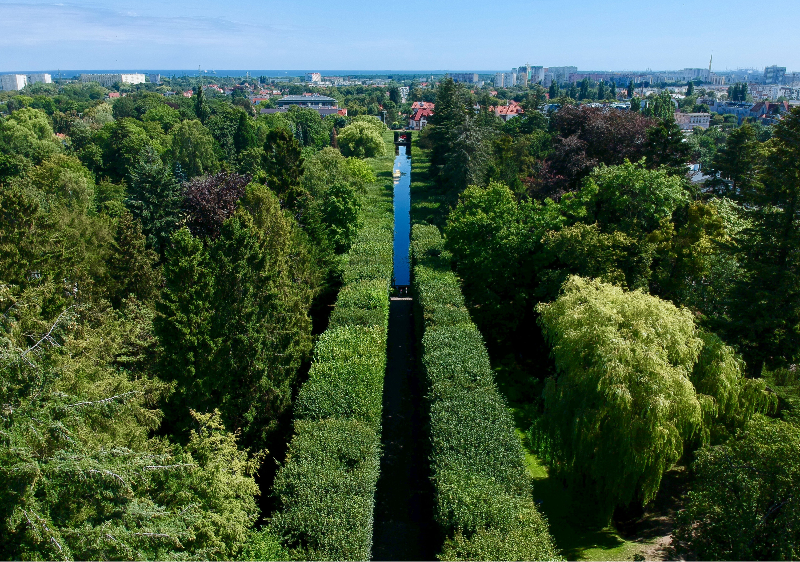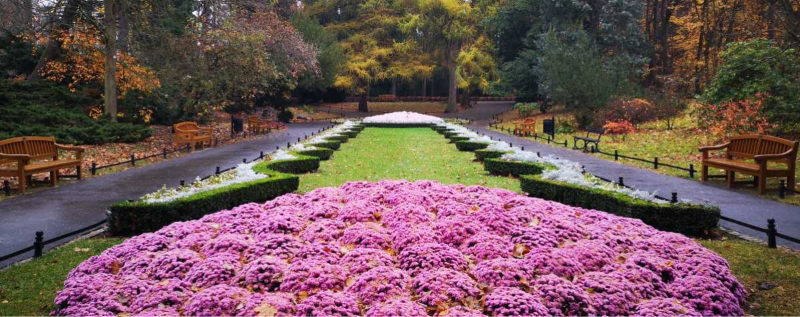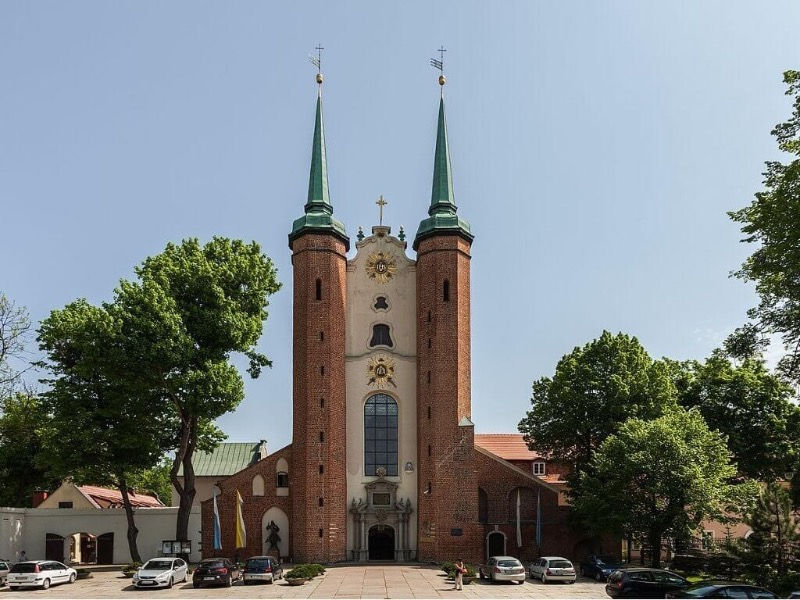Oliwa Park - an underestimated pearl in the crown of Gdańsk
- Damian Brzeski
- May 22, 2023
- 6 min read
Updated: Nov 9, 2023
If you are looking for a place where you can relax from the hustle and bustle of the city, admire the beauty of nature and feel the history, Park Oliwski is the perfect choice. This historic park, located in the Oliwa district of Gdańsk, is the oldest municipal garden in Poland and one of the most beautiful in Europe.
You will find here not only picturesque alleys, ponds and flowerbeds, but also many interesting attractions, such as the Palm House, Botanical Garden, Groty Whispers or the Adam Mickiewicz Monument.
In Park Oliwski you can also listen to classical music at concerts organized in the summer season or admire Christmas illuminations in winter. Park Oliwski is a place that delights at any time of the year and invites you to discover its secrets.
In this article, we will tell you what to see and do in this extraordinary place and why it is worth visiting.

History of the Oliwski Park - a walk in the footsteps of the Cistercians
Park Oliwski is a historic park in Gdańsk, dating back to the 12th century. It was then, in 1186, that the Cistercians came to Oliwa. The monks settled on the Oliwski Stream, transforming the forested areas for their own use. As time passed, monastery buildings and gardens were built, which served not only economic, but also cultural and scientific purposes.
Oliwa Abbey was an important center of religious and political life in the region. Meetings and talks with many outstanding personalities, such as Polish kings Sigismund III Vasa, Władysław IV and John Casimir, were held here. It was also here that the historic Peace of Oliwa was concluded in 1660, ending the Polish-Swedish wars.
The park took on a new shape on the initiative of the abbot of Oliwa - Jacek Józef Rybiński, who in the years 1754-1756 built a rococo palace with a garden in a geometric form typical of baroque gardens.
The design of the new layout of the Oliwski Park was developed by the gardener Hentschel, and the execution was entrusted to Kazimierz Dębiński from Kock. The park received a spatial arrangement based on two asymmetric axes of different lengths.
The new layout of the park was inspired by the classical French gardens of the architect Andre de Le Notre, the creator of the ornamental gardens in Versailles.
In front of the front of the abbey residence, a flower and lawn ground floor was created, opening towards a large rectangular pond located perpendicularly along the east-west axis.
Line Avenue was created along the same axis. Its extension at the eastern end is a pond framed by a row of trees, which for many years created an illusion called the Prince's View (optically the pond was connected to the waters of the Gulf of Gdańsk, several kilometers away). Due to the obtained illusion as if the sea (3 km away) began just beyond the canal, it was symbolically named by the monks as the Road to Eternity.
On the northern side of the longer compositional axis, two rectangular plots were located. In the lowered area, a second garden parterre was designed, the so-called paradisum - i.e. paradise, and then a labyrinth (currently an alpinarium). The space east of the palace was occupied by a large zoo.

In 1772, after the first partition of Poland, Oliwa was annexed to the Prussian state. In 1782, the Prussian king Frederick II the Great appointed Karol Hohenzollern-Hechingen abbot, who brought Jan Jerzy Saltzmann, the son of the court gardener, the creator of the royal gardens in Potsdam, to Oliwa. Saltzmann, in accordance with the fashion of the time, tried to imitate nature based on the ideas of Chinese gardens popular at that time.
In the northern part of the park, today called Chinese-English (or English), winding paths and water reservoirs imitating wild nature and park facilities (gazebos, pavilions, "temples", known from the preserved plan of the park from 1792) were created.< /p>

In the 19th century, the Oliwa park was often visited by the inhabitants of Gdańsk and the surrounding area. The popularity of the park in Oliwa increased when in 1925 Oliwa became the seat of the bishop of Gdańsk, and the post-Cistercian church was raised to the rank of cathedral, and when in 1927 the Staatliche Landesmuseum für Danziger Geschichte museum was opened in the Abbots' Palace.
During World War II, the Oliwa park was partially destroyed by warfare and fires. After the war, the park was rebuilt and restored by Polish specialists. In the 1950s, a new palm house and a botanical garden were built.
Currently, Oliwski Park is one of the most beautiful and oldest urban gardens in Poland and Europe. It is a place of rest and recreation for residents and tourists, and a place to organize many cultural and artistic events.

Oliwa Cathedral - not only a beautiful church
The Oliwa Cathedral is a historic church in the Oliwa district of Gdańsk, which serves as the archcathedral and the seat of the Gdańsk bishop. It is a three-nave Gothic basilica with Baroque furnishings and the famous Oliwa organ. Oliwa Cathedral was originally a monastery church of the Cistercians who settled in Oliwa in 1186.
In 1925, the church was raised to the rank of a cathedral and became a place of liturgical celebrations by the Gdańsk bishops.
Oliwa Cathedral is rich in works of art and monuments, such as the main altar with the image of Our Lady of Oliwa, the chapel of St. Adalbert with the relics of the patron saint of Gdańsk, the tombs of abbots and bishops, and the Oliwa organ with over 7,000 pipes and movable figures.
The Oliwa Cathedral is also the venue for many cultural and artistic events, such as the International Festival of Organ Music or the Oliwa Walking Pilgrimage to Wejherowo.

Palm house - unfortunately without a palm tree
The Oliwa Palm House is a historic greenhouse with exotic plants, which is located in the Oliwa Park in Gdańsk. It was established in the second half of the 18th century as a monastery winter garden gathering plants imported from various parts of the world.
The Palm House was part of a Baroque park complex, designed by the gardener Hentschel. In the 19th and 20th centuries, the palm house was expanded and modernized several times. In 1954, a new, cylindrical structure with a glass dome was built, which reached a height of 15 meters.
In 2017, the construction of a new rotunda began, which was to be taller and more spacious than the previous one, so as to accommodate the date palm, which has been growing continuously for 180 years. This construction met with many difficulties and delays. In 2020, the modernization of the orangery, which is part of the palm house, began.

In the Oliwa Palm House you can admire many species of thermophilic plants, such as palms, banana trees, araucarias, philodendrons, cacti, aloes, agaves, prickly pears, ficuses, orchids, cycads and others.
One of the oldest and most famous specimens was the 180-year-old Canarian date palm, which was the oldest artificially bred specimen of this species in Europe and the only such tree in Poland.
Unfortunately, the ongoing construction and the need to unveil the date palm caused the plant to wither. In 2021, this tree was cut down due to withering and a threat to the structure of the palm house.
I invite you for a walk to Oliwa
Park Oliwski is an extraordinary place that combines rich history, beautiful architecture and diverse nature. It is a place that delights both lovers of art and culture, as well as those who are looking for rest and relaxation in a green environment. Park Oliwski is also the heart of the Oliwa District, which has a lot to offer to tourists and residents.
In Oliwa you can admire the historic cathedral with the Oliwa organs, visit the abbot's palace and museums, as well as enjoy the rich cultural and gastronomic offer, numerous restaurants will surely satisfy you.
It is also worth visiting; Oliwa Zoo, look at the districts from the top the observation tower on the Pachołek hill, see the former tram depot, the Valley of Joy or just take a walk along the fairy-tale streets of Stara Oliwa.
Oliwa is also its new face together with the campus of the University of Gdańsk, Hala Olivia or an office complex with the highest skyscraper in Gdańsk, Olivia Star, towering above it.
As you can see, Oliwa is a district full of charm and surprises that will certainly not leave anyone indifferent.

We invite you to visit this wonderful district - a place where history meets nature, art and modernity.

Comments